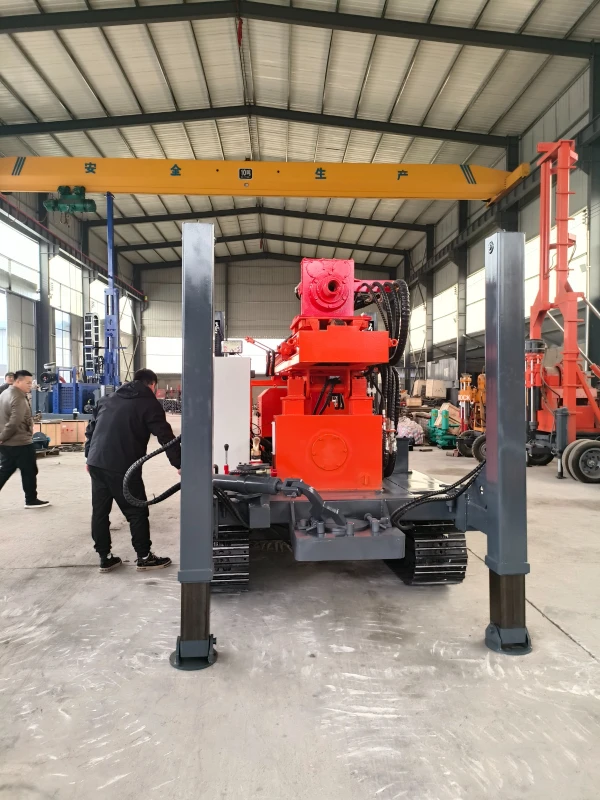
- August 28, 2024
- By admin
- Uncategorized
Drilling for water in urban and peri-urban environments presents a unique set of challenges that require a meticulous approach and careful planning. Increasing population and increasing infrastructure density make these operations more complex. This article explores the key challenges of drilling in these densely populated areas, as well as strategies to overcome them.
Space Management
Space Constraint
One of the most obvious challenges of drilling in urban areas is the lack of space. Unlike rural areas where there is ample land, urban areas are often congested with buildings, roads and other infrastructure. Finding a suitable location to install drilling equipment can be a logistical headache.
Solutions
1. Use of compact equipment*: Drilling technologies have evolved, allowing for the use of more compact machines specifically designed for tight environments.
2. Careful planning*: Thorough site investigation and careful planning are essential. Topographic surveys and subsurface analyses help identify optimal areas for drilling.
3. Coordination with local authorities*: Work closely with municipal authorities to obtain necessary permits and minimize disruption to residents.
Protection Against Pollution
Risks of Contamination
The density of urban infrastructure increases the risk of groundwater contamination. Chemical leaks, accidental spills and damaged underground infrastructure can introduce pollutants into groundwater sources.
Solutions
1. Preliminary Environmental Assessment: Before drilling begins, a thorough environmental assessment is essential. This helps identify potential sources of contamination and take preventative measures.
2. Advanced Drilling Technologies: Use drilling methods that minimize the risk of pollution, such as directional drilling, which reduces the need for large-scale excavation.
3. Continuous Monitoring: Implement monitoring systems to quickly detect any contamination and take immediate action. This includes the use of sensors and regular water testing.
Impact on Residents
Noise and Vibration Nuisances
Drilling work can generate noise and vibrations that disrupt the daily lives of residents. The proximity of homes increases sensitivity to these nuisances.
Solutions
1. Quiet Drilling Techniques: Using quieter drilling technologies and soundproof equipment can reduce noise pollution.
2. Communication and Transparency: Informing residents of upcoming work and its duration. Good communication can reduce frustration and promote understanding.
3. Reasonable Work Schedules: Scheduling work to minimize disturbance during residents’ rest and sleep hours.
Waste Management
Drilling Waste
Drilling generates a significant amount of cuttings and sludge. In urban areas, the management and disposal of this waste must be carried out diligently to avoid any negative environmental impact.
Solutions
1. Waste Recycling: Use drilling mud treatment and recycling techniques to reduce the amount of waste to be disposed of.
2. Safe Transportation and Storage: Ensure safe transportation and storage of waste to prevent any accidental leakage or spillage.
3. Partner with Specialized Companies: Collaborate with specialized waste management companies to ensure disposal in accordance with environmental regulations.
Protecting groundwater from contamination is crucial during urban drilling operations. To achieve this goal, several advanced drilling technologies have been developed. Here are some of the most suitable:
Directional Drilling (HDD)
Description
Horizontal directional drilling (HDD) is a technique that allows wells to be drilled in a precise and controlled manner, following a specific path.
Benefits
– Precision: Allows to bypass underground obstacles and minimize disturbances to geological layers.
– Waste Reduction: Generates less spoil compared to traditional methods.
– Lower Environmental Impact: Reduces the risk of contamination by limiting the excavation of large areas.
Rotary Drilling with Eco-Friendly Drilling Mud
Description
This technique uses a rotating drill head accompanied by drilling mud, which cools and lubricates the tool while stabilizing the drill hole.
Benefits
– Borehole Stability: Drilling mud helps prevent hole collapse, reducing the risk of cross-contamination between geological layers.
– Use of Eco-Friendly Muds: Eco-friendly drilling muds are formulated to be less polluting and easier to process.
Air Drilling
Description
Air drilling uses compressed air to extract cuttings from the borehole, instead of drilling mud.
Benefits
– No Drilling Mud: Eliminates the risk of mud contamination, simplifying waste management.
– Efficiency: Allows for faster and cleaner drilling in rock formations.
Double Envelope Drilling (Dual Rotary Drilling)
Description
This technique uses two concentric tubes: the outer tube pierces the ground, while the inner tube transports the debris to the surface.
Benefits
– Layer Protection: The outer tube stabilizes the borehole, reducing the risk of contaminating aquifers.
– Precision and Control: Provides greater control over the trajectory and depth of the borehole.
Sonic Drilling
Description
Sonic drilling uses high frequency vibrations to penetrate soil and rocks.
Benefits
– Reduced spoil: Generates less spoil compared to traditional methods.
– Less disturbance: Vibration reduces disturbance of geological layers, minimizing the risk of contamination.
Real-Time Monitoring and Control Systems
Description
The integration of real-time monitoring systems allows continuous monitoring of drilling parameters, such as pressure, temperature and water composition.
Benefits
– Early Detection of Contaminants: Allows for rapid response when contaminants are detected.
– Operations Optimization: Helps adjust drilling techniques in real time to minimize environmental impacts.
Synthesis
Advanced drilling technologies offer effective solutions to protect groundwater from contamination in urban areas. The choice of technology depends on the specific site conditions and project objectives. By combining these techniques with careful planning and continuous monitoring, safe and environmentally friendly drilling can be achieved in densely populated areas.
Conclusion
Water drilling in urban and peri-urban areas requires a carefully planned and executed approach to overcome the specific challenges associated with these environments. Spatial management, protection against pollution, minimisation of nuisances and waste management are all factors to consider. Thanks to advanced technologies and close collaboration with local authorities and residents, efficient and safe drilling can be carried out even in the most densely populated areas.